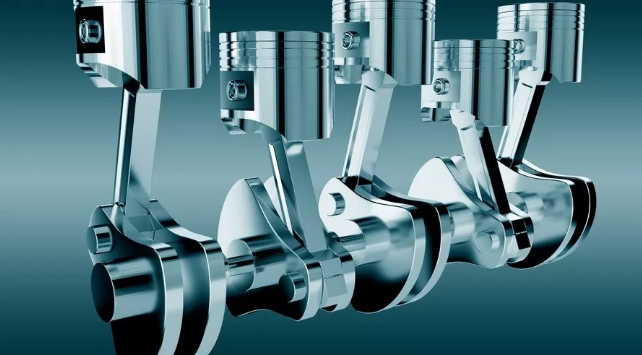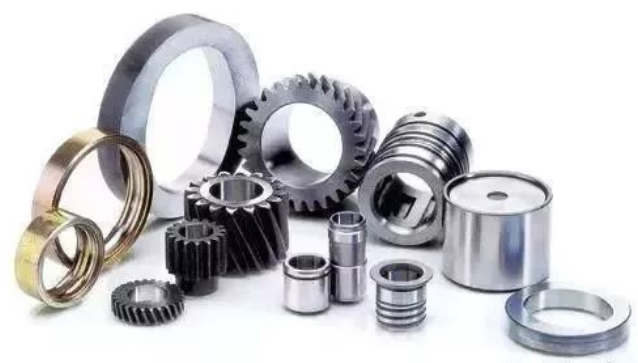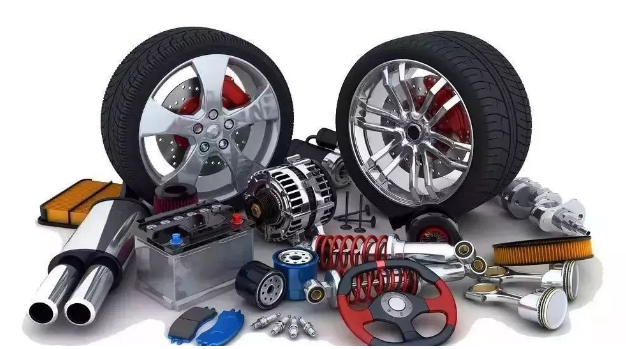
The new development trend of the auto parts industry chain
2021-09-15
As the top of the automobile industry, the auto parts industry can also be said to be the basis for the development of the automobile industry. In recent years, with the rapid development of the vehicle consumption market and the service and maintenance market, the auto parts industry has developed rapidly and has a good development trend.

At the same time, the globalization of the automobile industry chain has accelerated the merger and reorganization of vehicle enterprises, breaking the original global supporting system, thus promoting the merger and reorganization of parts and components enterprises. At the same time, in order to meet the new needs of OEMs, the world auto parts industry has seen some new development trends:
1. Development and Changes in the Collaborative Relationship between Automobiles and Parts Manufacturers
Today, the organizational relationship between European and American vehicle and parts manufacturers has been greatly improved from the previous purely competition-based supply model, and the direction of improvement is the Japanese subcontracting type, reducing the number of first-tier parts suppliers. Reduce management functions, and at the same time maintain competitiveness, take into account the cooperation. The ways of cooperation include strategic alliances between enterprises and mutual shareholding.
The subcontracting model based on cooperation between Japan and South Korea retains the characteristics of cooperation and continuously joins the competition mechanism. Even if only two manufacturers supply parts and components, they can use the above-mentioned "development competition" and other methods. Keep competition effective.
The new network structure formed by the mutual supply of various parts production systems is conducive to improving the degree of competition. The organizational relationship between OEMs is becoming more and more cooperative and competitive, improving organizational efficiency, giving full play to the respective advantages of OEMs and parts manufacturers, and improving the overall competitiveness of the entire supply chain.
2. Globalization Development
The globalization trend of the automotive supply chain is obvious to all. Due to the globalization of the consumer market, OEMs are bound to use different means such as sole proprietorship and joint venture to enter the global consumption hotspots, and the global distribution of OEMs will lead to the follow-up of parts manufacturers. This globalization trend The following challenges are presented to component manufacturers:
The global demand trend of the supporting market and the aftermarket requires component manufacturers to meet the ability of global delivery. In order to achieve timely delivery, more consideration needs to be given to various delivery issues, and even further consideration of the global supply of raw materials.
In order to ensure 100% DIFOT, and based on certain tax issues, component manufacturers may adopt a strategy of following the global distribution of OEMs. However, the conflict between this decentralized organizational model and the original centralized management, and the balance of how to reduce operating costs and improve organizational efficiency pose challenges to the shared service capabilities of enterprises.
3. The development of technology and the upgrading of high-end manufacturing of parts and components
With the improvement of new energy requirements for automobile safety, comfort and environmental protection, some new changes have also occurred in the manufacturing technology of auto parts, including:
Product environmental protection, strengthen research on "green cars", actively apply new energy, and promote the requirements of energy saving and emission reduction. In the German 2020 high-tech strategy setting, one of the future projects is: Germany will have one million electric vehicles in 2020.
Electronic and intelligent products have become a major trend in the development of the automobile industry. How to improve the safety and comfort of automobile use through electronic technology has also become a hot spot in the entire industry. By 2020, the global automotive electronics industry will maintain an average growth of 8.5% strength.
Networked information exchange: With the maturity of 4G/LTE and cloud technologies, the information exchange components in automotive electronic products are becoming more and more networked. Components and products are modularized and generalized to respond to the platform strategy of OEMs Product Lightweight: In the future, the lightweight of automobiles is actually the lightweight of components. The large-scale application of aluminum castings, aluminum-magnesium alloy parts, and automotive plastic parts will be a trend. Digitalization, globalization: simulation technology, 3D digitization, etc. Digital technologies are changing the way designs are developed in the automotive industry. In order to meet the needs of accelerated product development cycle and development cost allocation, technology development has carried out extensive integration and cooperation on a global scale.
4. Closer and almost synchronous whole-organization enterprise business collaboration
In order to meet the diverse needs of customers, OEMs pay more and more attention to the ability of mass customization, and mass customization requires supporting spare parts products to support modularization. The emergence of modularization further promotes close cooperation between vehicle manufacturers and module suppliers in development, manufacturing and service. At the same time, in order to quickly respond to market demand, it is necessary to improve the efficiency of the entire supply chain. The changing needs of various downstream markets are transmitted to upstream component suppliers, requiring these large-scale and capable component suppliers to have a full range of functions such as modular design, development, manufacturing and service.
1. Use collaborative design software to support synchronous design and development
2. Use traditional EDI technology to exchange demand and supply between OEMs and Tier 1 suppliers
3. Use ASN and barcode technology to improve logistics coordination and management capabilities
4. Improve collaborative on-demand production using technologies such as extended Kanban or JIT/S
The application of the above-mentioned general information technology is developing at a faster speed than in the past decades, and the cooperation between the whole enterprise is strengthened.
5. Extension of Lean Thinking
The pressure of cost is the eternal driving force for the continuous improvement of enterprises.
On the basis that the cost of raw materials has little room for decline within a reasonable range, various advanced management and manufacturing ideas have been developed to further improve the operating efficiency of the enterprise and reduce operating costs.
World-class manufacturing will promote:
1. Extending Lean thinking from within the enterprise to the external supply chain
2. Focus on customer needs, product quality and reliability
3. And the development of a strong, agile and flexible workforce
4. Reduce waste in business operations and processes
5. Emphasis on communication and collaboration with customers and suppliers
Smart Manufacturing: The increasingly personalized demand is the original driving force for single-piece flow production. In order to satisfy the needs of individual customers, but at the same time make it profitable to produce one-off products, companies must engage in intelligent manufacturing. And industrial Internet of things (industrialinternetofthings), cyberphysical system (Cyberphysicalsystem, CPS), industry 4.0 (Industry4.0), and other ideas and practices and application practice will become the hottest topic in the next 10 years.
Big data: Big data is undoubtedly a big topic, and the practice of this big topic will be differentiated and implemented in various industries. How the auto parts industry uses big data and providing big data will generate value with the rise of intelligent manufacturing.
6. Industry Specifications
Industry development, standards first, auto parts industry standards have been continuously improved in recent years, allowing people to see the hope of healthy and orderly development of the industry. At the same time, due to the globalization trend of the market and competition, various industry norms have gradually developed and integrated:
Convergence and convergence of standard requirements of OEMs: Each OEM will also have its own standard requirements for supporting factories, but the basic content is the same.
For example, the Ford Q1 certification includes both the MMOG/LE specification and the IATF16949 specification as a prerequisite.
OEMs are paying more and more attention to the specification of material operation: under the general trend of improving the efficiency and competitive advantage of the entire supply chain, more and more OEMs regard MMOG/LE specification certification as a basic requirement for supporting suppliers.

7. Aftermarket
The rapid growth of car sales has provided great imagination space for the aftermarket. As early as 2010, China Automobile Consulting Center predicted that if the number of cars in China reaches 100 million, the after-sales parts market will reach nearly 300 billion yuan. According to Lin Lei, co-president and CEO of Sinotrust International Information Consulting Co., Ltd., the output value of the auto aftermarket, which mainly includes auto repair services, will reach 700 billion yuan in 2015.
Several main factors that affect the aftermarket are the number of complete vehicles, the proportion of long-age vehicles and the average annual distance of passenger vehicles. According to industry forecasts, the compound annual growth rate of passenger cars in China from 2013 to 2018 will reach 7%, and the sales of new vehicles will reach 25 million by 2018. In the domestic car ownership from 2002 to 2013, there were 56.9 million passenger cars aged 0-3 years, of which about 90% were within the warranty period. As for the average annual driving distance of passenger cars, it can be seen from the comparison that the average annual driving distance of the Chinese market is far more smooth than that of other countries, which further accelerates the rapid expansion of the after-sales market.
From the current point of view, although China's auto parts market has huge potential, local parts companies are facing the danger of being marginalized. At this stage, almost the vast majority of core suppliers of auto companies are monopolized by foreign joint ventures or wholly-owned parts and components companies. However, with the recent introduction of a number of policies aimed at the automotive industry by relevant state departments, the relatively closed parts supply system in the after-sales field will be broken to a certain extent. to market dividends.

In addition, compared with OEM matching, the profit of the after-sales market may be 2-3 times that of the former. According to the data, the average profit margin before tax of auto parts manufacturers in 2012 and 2013 was 6.5%. The most profitable areas are chassis, transmission systems and tires, while the profit of interior components will further shrink. High technology content and high added value bring high profits, which are prominently displayed in the chassis, transmission system and tire industries. This means that the automotive aftermarket is huge and profits are rising. Many products, such as tires, are far more profitable in the aftermarket than in the vehicle market.




